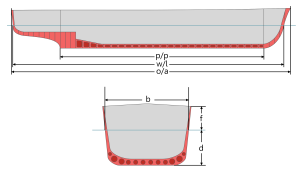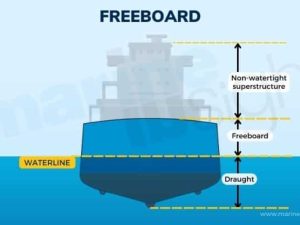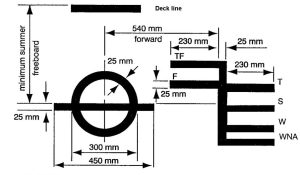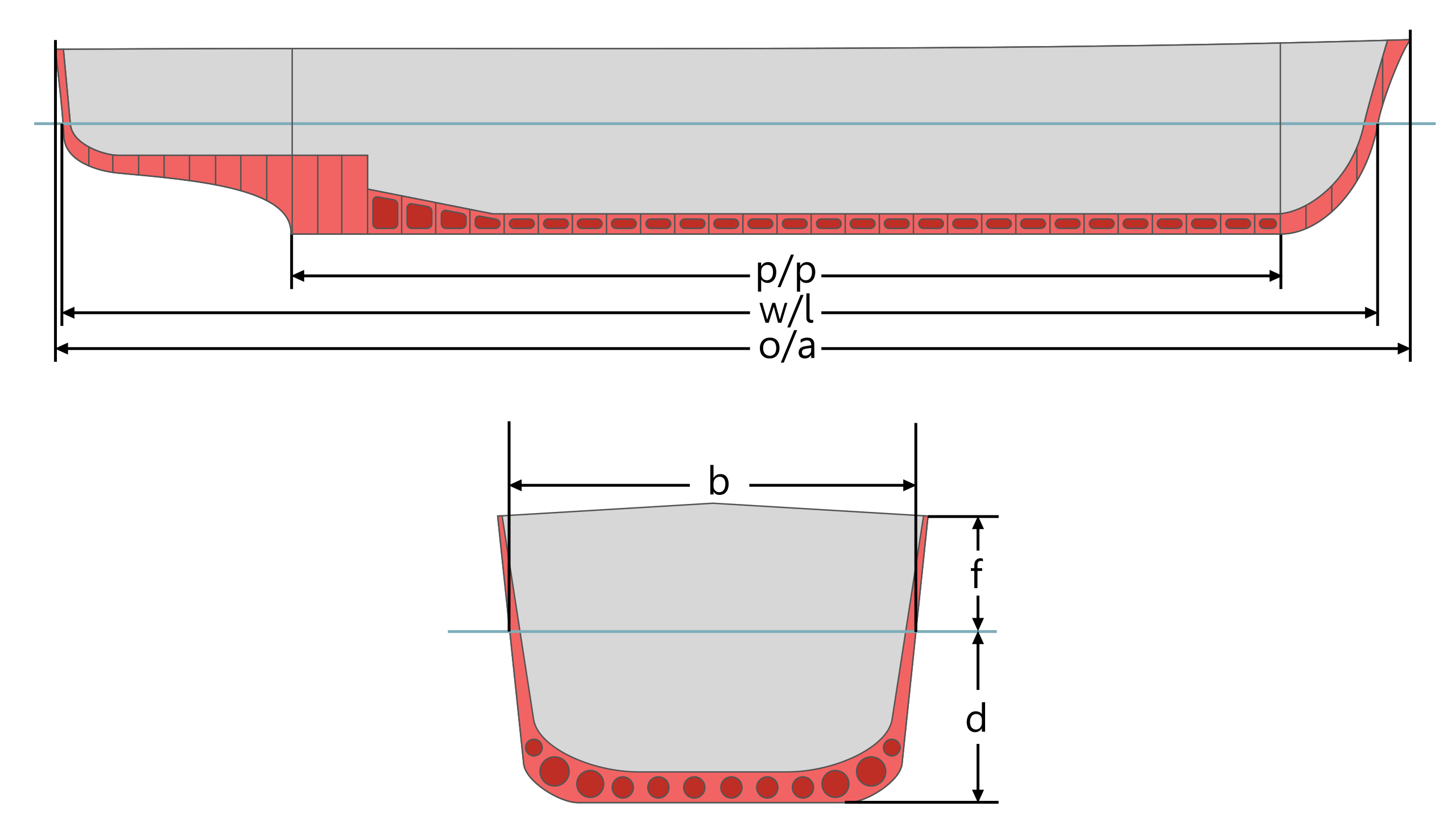Freeboard on ships is an essential aspect of naval architecture, directly related to vessel safety. The concept of freeboard refers to the vertical distance from the waterline to the upper deck edge of a ship’s hull, measured at the midship point. This measure is crucial as it indicates the minimum permissible distance between the sea and the lowest deck capable of taking on water. It essentially represents the safety margin that ensures a ship’s integrity and seaworthiness in various conditions.

A graphical representation of the dimensions used to describe a ship. f is the freeboard.
Freeboard serves several purposes: it provides a vessel with enough reserve buoyancy, ensures the structural strength is not compromised by overloading, and maintains sufficient height above water to allow safe navigation in all weather conditions. Higher freeboard can contribute to a vessel’s ability to resist taking on water in rough seas, thus enhancing safety for both the ship and crew.

Credit: Marineinsight
There are two primary categories of ships in relation to freeboard: Type A and Type B.
Type A ships, which carry liquid cargo like oil or chemicals, have specific freeboard requirements due to their cargo characteristics. The liquid nature of their cargo provides a level of safety, allowing these ships to have a lower minimum freeboard.
Conversely, Type B ships, which include a variety of cargo vessels, often require a higher freeboard due to the potential rapid water ingress and subsequent loss of buoyancy if the hull is breached.
In the international regulatory framework, the International Convention on Load Lines establishes criteria for freeboard as part of its safety measures. This includes the specification of load lines on a ship’s hull, which illustrate the maximum depth to which a ship can be safely submerged under various conditions, such as different seasons and geographical areas. Following a load line survey and certification, ships must not alter their structure or equipment that would affect the freeboard without proper authority approval.
The International Convention on Load Lines, which is closely associated with the SOLAS (Safety of Life at Sea) and Tonnage Conventions, sets out the freeboard requirements for ships. These conventions collectively aim to ensure the safety and seaworthiness of ships. Here’s what each convention stipulates with regard to freeboard:
- SOLAS Convention: The SOLAS Convention does not directly specify freeboard requirements; however, it does require ships to comply with the structural, stability, and seaworthiness standards, which indirectly involve freeboard as these are essential for the intact stability of the ship. SOLAS also includes regulations that require watertight and weathertight integrity of ships, which are intrinsically related to freeboard.
- Tonnage Convention: The International Convention on Tonnage Measurement of Ships, 1969, determines how the gross and net tonnages of a ship are calculated. Although the Tonnage Convention does not directly deal with freeboard, the tonnage calculation impacts the size and type of the ship, which then influences the freeboard requirements as set out by the Load Line Convention.
- Load Line Convention: The International Convention on Load Lines, 1966 (and its subsequent updates), explicitly determines the minimum freeboard for ships. Freeboard is the distance from the waterline to the upper deck level, which ensures that the ship has sufficient reserve buoyancy. The convention prescribes several freeboard measurements based on factors such as ship type, size, construction, and the water types (sea or freshwater) and temperatures (summer or winter zones) in which the ship will operate. The Load Line Certificate, which is derived from this convention, certifies that the vessel has been surveyed and marked with the appropriate load line, indicating the maximum depth to which the ship may be loaded safely.

It is the Load Line Convention that sets the freeboard to ensure that the ship maintains enough reserve buoyancy and remains seaworthy in different loading and operating conditions. These requirements are designed to provide a standard of safety to minimize the risks of overloading, which in turn helps to ensure the stability and integrity of the ship in a range of operating conditions.

